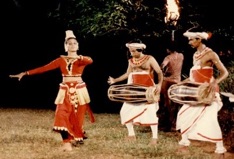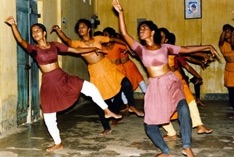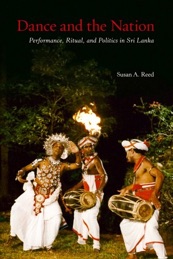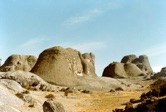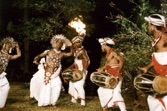
Dance and Ritual in Sri Lanka
A two-part film series
This series was produced as a DVD companion to the book Dance and the Nation: Performance, Ritual and Politics in Sri Lanka by anthropologist Susan A. Reed (2010). The book presents "an historical ethnography of Kandyan dance" and explores its transformation from a local ritual-based dance form, the Kohomba Kankariya, into a national symbol of traditional Sinhala culture, the ethnic majority in Sri Lanka. The film material, shot in Kandy in the late 1980s, includes unique performances of ritual ceremonies and stage dances by some of their finest exponents. (continues below)
Introduction
Kohomba Kankariya Ritual
Training & Rehearsal
Kandyan Stage Dance
References
-
Obeyesekere, Gananath (1979) Popular Religions. In Modern Sri Lanka: A Society in Transition. Tissa Fernando and Robert N. Kearney, eds. pp. 201–25. Syracuse, NY:
-
Syracuse University Press.
-
Reed, Susan A. (2010) Dance and the Nation. Performance, Ritual and Politics in Sri Lanka. Madison, Wisconsin: The University of Wisconsin Press.
-
Reed, Susan A. (1998) The Politics and Poetics of Dance. Annual Review of Anthropology, 27: 503–32.
Formerly known as Ceylon, Sri Lanka is a tropical island located 20 miles off the southern coast of India (see map below). With a population of about 21 million, Sri Lanka is home to the Sinhala ethnic majority (74%), a primarily Buddhist group that speaks Sinhala, and the Tamils (12%), who are mainly Hindu and speak Tamil. Other groups include Muslims (7%), Indian Tamils (6%), and Burghers (1%).
The island was colonized by the Portuguese (1505–1658), the Dutch (1658–1796) and the British (1815-1948). British colonial rule helped to create divisions between ethnic groups, especially between the Sinhalas and the Tamils. After Independence, in 1948, these divisions deepened and led to protests by Tamils and, eventually, to a prolonged civil war that lasted until 2009.
Within this complex postcolonial process, Kandyan dance played a key role in the formation of an ethnic and national identity. From its roots in a local Sinhala tradition, it became part of the nationalist ideology and program and was later adopted as the official, state-sponsored "national" dance of Sri Lanka.
This video series is recommended for teaching about subjects including:
ritual and symbolism
dance and performance
myth and religion
ethnomusicology
Sinhala cultural and national identity
Southeast Asian studies

The complete collection of videos featured here is available as a DVD Companion to the book Dance and the Nation: Performance, Ritual and Politics in Sri Lanka by Susan A. Reed
For more information and to purchase copies of the book, please contact The University of Wisconsin Press
Documentary
Advocacy
Creative
EthnoVisions
